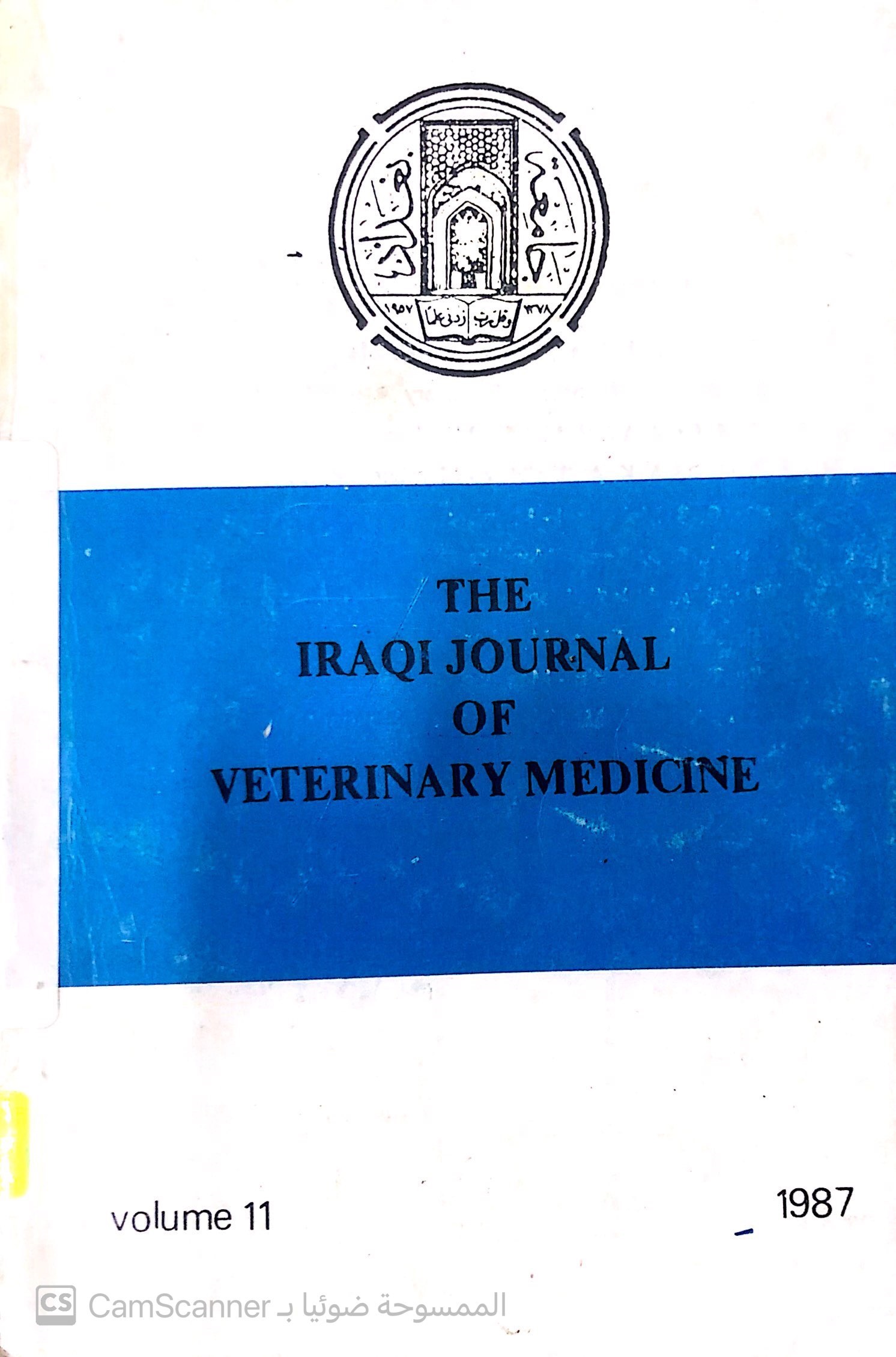EVALUATION OF MONENSIN AND AMPROLIUM ON COCCIDIOSIS IN BROILLERS
Main Article Content
Abstract
The present study was intended to evaluate the prophylactic effects of two anticoccidial drugs (monensin and amprolium) on experiinental infection with Eimeria tenella in chickens. Twenty one day-old chicks were used, they were divided in two main groups (floor and battery brooders rearing) with 112 chicks for each group. Each group was subdivided into four subgroups represent, control, infected nontreated, treated ‘with monensin and treated with amprolium. Monensin was given at rate of 100 ppm in ration while amprolium was given at a rate of 125 ppm in drinking water. The birds were infected with 50.000 sporulated oocystes/bird at 25 days of age injected directly into the crop. The following parameters were used to evaluate the drugs; weight gain, food cdnsumption mortality, oocystes count and packed blood cell volume. The results showed clear differences between control and infected groups. Monensin improved weight gain, feed conversion, reduced mortality, oocystes passed and lesion score, the drug prevent the decrease packed cell volume as compare to the infected nontreated group.Similar results were obtained with amprolium but in general the efficiency of the later was less than monensin in several respect. The results also indicated that the intensity of infection was more in the floor reared group than the brooder group.
Downloads
Article Details
How to Cite
Publication Dates
References
Al-Sheikhly, F. A. (1982). Diseases of Poultry. University of Baghdad, Baghdad, Iraq. Ibrahim, H. M. (1982). Poultry Disease Survey in Baghdad
District for year (1981-1982). MSc Thesis. Coll; of Vet. Med. University of Baghded, Baghdad, Iraq.
Kelly, W. R. (1967). Veterinary Clinical Diagnosis. Lat. Bailliere Tindall, London.
Long, P. L. and Rowell, J. G. (1958). Counting oocyst of chicken coccidia. Laboratory Practice. 7: 515-534.
Long. P. L.; Tompkins, R. V.; and millard, B. J. 91975). Coccidiosis in Broiler: Evaluation of infection by the examination of broiler house litter for oocysts. Avain Pathol., 4: 287-294.
McLoughlin, D. K.; and Chute, M. B. (1974). the eeicacy of monensin against one sensitive and thirteen drug resistant strains of E. tenella. Poult. Sci. 53: 770-772.
Reid, M. W. (1975). Progress in the control of coccidiosis with anticoccidial and planned immunization. Am. J. Vet. Res. 36: 593-596.
Reid, M. W.; Kowalski, L.; and Rice, J. (1972). Anticoccidial activity of monensin in floor-pen experiment. Poult. Sci., 51: 139-146.
Ruff, D. M.; Reid, M. W.; and Rahn, P. A. (1976). Efficacy of different feeding levels of monensin in the control of coccidiosis in broiler. Am. J. Vet.Res. 37: 963-967.
Singh, J.; and Hussain, O. (1978). Therapeutic activity of amprolium and cordinal against E. tenella infection and effect of medication on the development of immunity. Ind. Vet. J. 55: 56-60.
Tyzzer, E. E. (1929). Coccodiosis in gallinaceous birds. Am. J. Hyg. 10: 269-385.
Wyatt, R. D.; and Ruff, M. D. (1975). Interaction of aflatoxin with E. tenella infection and monensin in young broiler chickens. Avain Dis. 19: 730-739.





